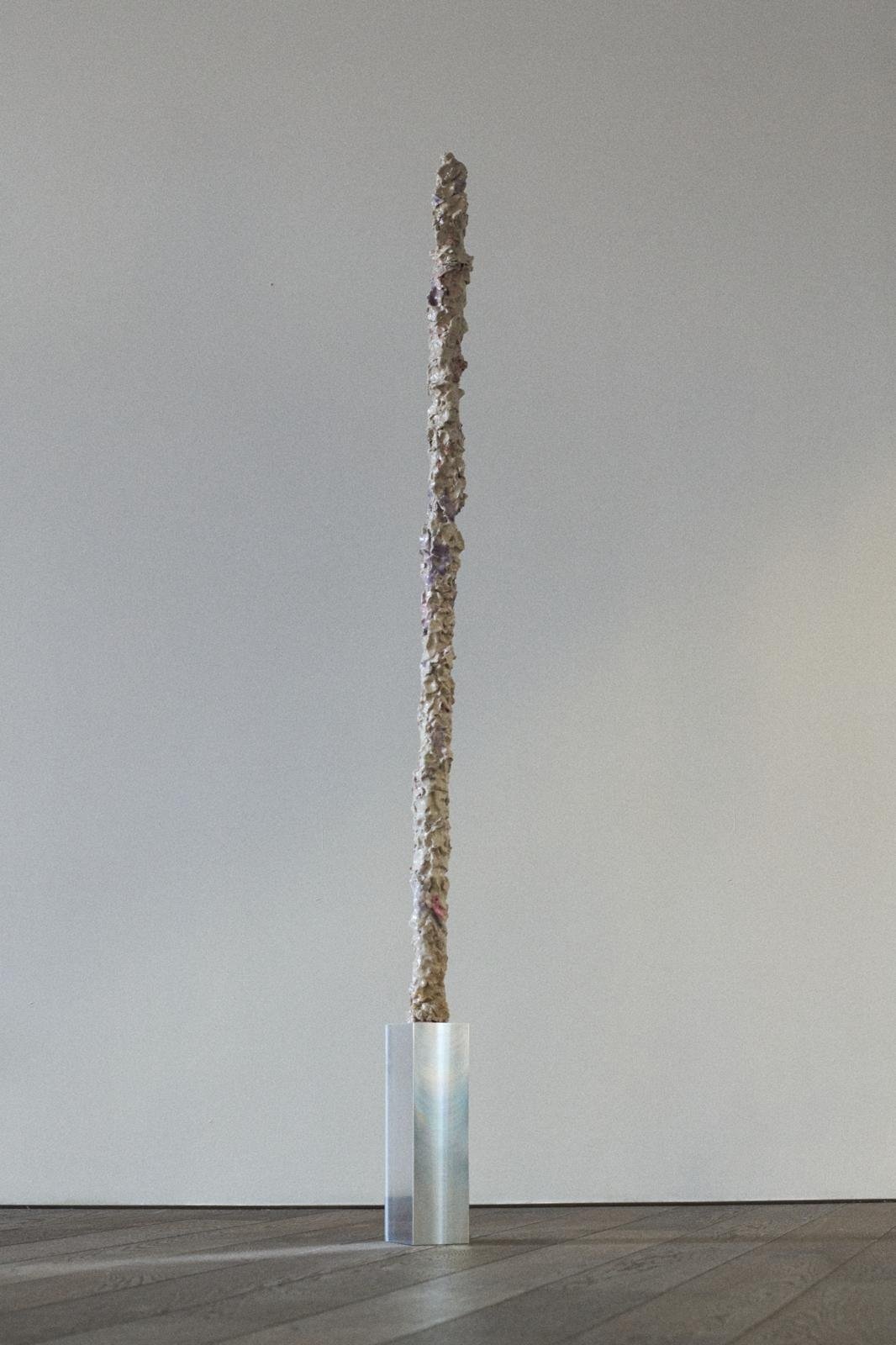 Image 1 of 4
Image 1 of 4

 Image 2 of 4
Image 2 of 4

 Image 3 of 4
Image 3 of 4

 Image 4 of 4
Image 4 of 4





Tronje Thole van Ellen — Dingsein II
2025 — Clay, Aluminium
160 × 10 × 8,5cm — EUR 5.600,00 (brutto)
For further artwork information or purchase, please email us at contact@massoumi.art or reach out via our contact form.
In the new works by Tronje Thole van Ellen, the two-dimensional canvas undergoes a renegotiation: painted, folded, and set upright, two sculptural bodies emerge from the surface. They follow the logic of the line, which is no longer confined to the plane but instead spans space in a sweeping gesture between floor and window. Emerging from painted canvases, the sculptures mark a transitional state—oscillating between image and body, between abstraction and the suggestion of the figurative. Traces of painterly action remain visible on the surfaces: spontaneous placements, gestural layering, a rhythm of compression and openness. Van Ellen translates the impulse of painting into a sculptural form that does not exist statically but changes with every position, every gaze. This multiplicity demands active seeing, a bodily experience of space. The development from image surfaces into something plastic is not an illustrative process but a fundamental shift in category: the sculptures retain the open structure of painting and at the same time resist fixation. Their intrinsic immediacy lies not in the gesture of retreat, but in a trust in the material—its tension, its flaws, but also its stability.
Van Ellen does not negotiate painting as a discipline, but as a way of thinking in space. He translates the line, which in painting only suggests space, into actual spatial presence. It is a thinking with the body of the image, which inscribes itself into space. And a trust in the uncertain—in what arises when painting is not merely shown but allowed to grow beyond its original surface.
Text: Anna Maria Linder
2025 — Clay, Aluminium
160 × 10 × 8,5cm — EUR 5.600,00 (brutto)
For further artwork information or purchase, please email us at contact@massoumi.art or reach out via our contact form.
In the new works by Tronje Thole van Ellen, the two-dimensional canvas undergoes a renegotiation: painted, folded, and set upright, two sculptural bodies emerge from the surface. They follow the logic of the line, which is no longer confined to the plane but instead spans space in a sweeping gesture between floor and window. Emerging from painted canvases, the sculptures mark a transitional state—oscillating between image and body, between abstraction and the suggestion of the figurative. Traces of painterly action remain visible on the surfaces: spontaneous placements, gestural layering, a rhythm of compression and openness. Van Ellen translates the impulse of painting into a sculptural form that does not exist statically but changes with every position, every gaze. This multiplicity demands active seeing, a bodily experience of space. The development from image surfaces into something plastic is not an illustrative process but a fundamental shift in category: the sculptures retain the open structure of painting and at the same time resist fixation. Their intrinsic immediacy lies not in the gesture of retreat, but in a trust in the material—its tension, its flaws, but also its stability.
Van Ellen does not negotiate painting as a discipline, but as a way of thinking in space. He translates the line, which in painting only suggests space, into actual spatial presence. It is a thinking with the body of the image, which inscribes itself into space. And a trust in the uncertain—in what arises when painting is not merely shown but allowed to grow beyond its original surface.
Text: Anna Maria Linder
